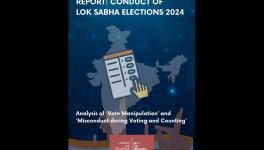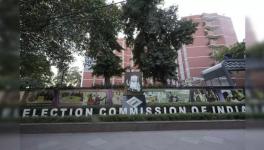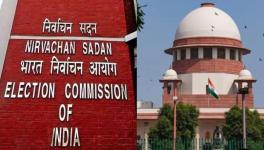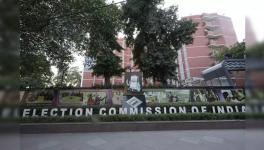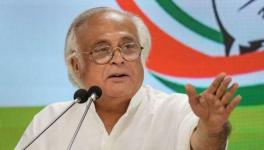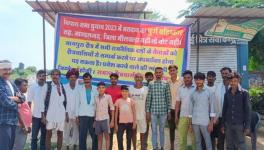Depoliticisation, Informality Key Reasons for Urban Voter Apathy
Representational Image. Image Courtesy: PTI
The Chief Election Commissioner (CEC), during a recent press conference, pointed out that ‘urban apathy’ was the key reason for low voter turnout in Assembly and Parliament elections in cities and towns. He noted that out of the 20 constituencies with the lowest voter turnout, 11 were urban areas. This trend of low voter turnout is also visible in constituencies with a significant urban population.
The CEC also mentioned the initiatives taken by the Election Commission to encourage greater participation, such as engaging with universities, colleges and even secondary schools through a programme called “Electthon”. While these efforts are commendable, it is essential to address the root causes of the problem to achieve the desired results.
What is urban apathy, and why is it widely prevalent?
It is estimated that nearly 500 million people currently live in urban centres, and this population is projected to reach 600 million by 2031. There are almost 5,000 statutory and an equal number of non-statutory towns, as well as nearly 23,000 villages on the peripheries that function as urban centres. The size of urban centres in India is enormous, and the governance structures are too elitist, making it challenging for the common people to participate.
‘Urban apathy’ is not a result of individual subjectivity but a manifestation of the depoliticised environment and the belief that “nothing can happen”. As a result, people lack interest in urban issues and problems, such as poverty, crime, environmental degradation, and politics, which affect the cities and the residents. This phenomenon is also a reflection of the large-scale informalisation of the major sectors that provide employment in the cities, making it a daunting task for individuals to survive and obtain the bare minimum.
The complexity of urban issues can make residents feel overwhelmed and helpless. Additionally, anonymity and disconnection are widespread in large cities, leaving individuals wanting a greater sense of belonging.
This sense of alienation can also be attributed to the way city structures are being constructed. For example, the entire city development process is so elitist that even middle-class sections of society feel disconnected, let alone the large sections of the working class.
Not just 74th Amendment, Even Right to the City Needs Rethink
The 74th constitutional amendment in 1993 laid the foundational principles of peoples’ participation at the city level. Nearly 18 subjects along with the three F’s-- Functions, Functionaries and Finances -- were supposed to be transferred to cities across the country. However, very little was achieved. City planning across the Indian state continues to be in the hands of the parastatals controlled by the state or even the Central governments. Not more than three functions have been universally transferred to city governments. The functionaries continue under the state government, and the 15th Finance Commission has even pointed out the abysmal state of finances.
In such a situation, where even the bare minimum provisions have since not been implemented, a major issue that should have been dealt with in the amendment, is city transformation. That is the whole issue of migration. Migration was not even considered in the amendment, hence ensuring peoples’ participation in city-making and governing structures would require incorporation of some of the new elements in city life.
These new element are Business Process Outsourcing firms (BPOs), Knowledge Process Outsourcing (KPOs), informal structure of employment, platform-based employment or gig workers, cities turning out into education hubs for different kinds of coaching etc. Also, the transformation of traditional and conventional neighbourhoods into gated communities or slum neighbourhoods, the different forms of mobility and so on. The canvas is far too wide for breaking “urban apathy” and finding ways for more active peoples’ participation.
The ‘right to the city’ needs to be revisited. As a concept, this is not just a right to demand certain things from the State but rather a right to shape the city oneself. It means the right to participate in the creation and development of cities and urban environments, which has to come from social movements pushing the agenda for access to urban resources, affordable housing, and public services and aims to empower individuals and groups.
There has been a colossal failure of the workers’ movements in the cities of India. The workers’ movements, which draw their strength mainly from the formal workforce, have not been able to consider the city as an arena of battle to shape it for their own secure and better future. Despite large mobilisation of workers going on since the 1990s, such mobilisation of the working people has never imagined issues of the cities as their own issues.
What More Should be Done by ECI?
The efforts, as already pointed out, are commendable, but more needs to be done to ensure better voter participation of people at the city level:
- The informal sector in the cities must be targeted for more significant participation. The city is currently run more informally than through formal institutions. A massive drive needs to be undertaken to ensure the participation of this sector. This can include the participation of employees and workers’ unions in the sensitisation exercise.
- It is seen that those involved in this sector have an arduous task to enrol themselves as voters. Their number in large cities is in millions. Domestic helps, watchmen, security guards, gardeners, and so on fall into this category.
- Students are another central area for ensuring greater participation. Holding elections at every college and university campus is vital for ensuring a political atmosphere. There are Lyngdoh Committee recommendations, but these are hardly followed. Why are these suggested? Because a general apolitical environment exists on the campuses. Being apolitical is considered better than being political. Here, by being political, one means being politically conscious. One of the tried and tested ways to break this barrier of a-politicisation is to ensure students’ participation in the democratic process on their campuses.
- Engaging urban local bodies is another central area that needs to be addressed. We have seen how people participate more during municipality elections but less during Assemblies or Parliament. There should be a continuous engagement with these bodies.
Lastly, there should an effort to create a political environment akin to what is being done for the Karnataka elections – Electhons -- there is a pressing need for Policthons. This can be a regular exercise wherein residents of cities are engaged, ensuring more participation and politicisation.
The writer is the former deputy mayor of Shimla, Himachal Pradesh. The views are personal.
Get the latest reports & analysis with people's perspective on Protests, movements & deep analytical videos, discussions of the current affairs in your Telegram app. Subscribe to NewsClick's Telegram channel & get Real-Time updates on stories, as they get published on our website.










